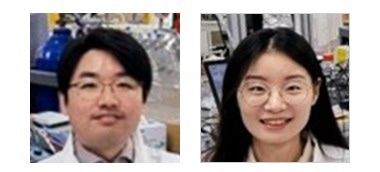Reviewed by Lexie CornerMar 14 2024
Aiming to improve the efficiency of reactions using contaminated municipal sewage to produce hydrogen (a green energy source), Professor Kangwoo Cho and Ph.D. candidate Jiseon Kim from Pohang University of Science and Technology (POSTECH) worked with the Korea Institute of Science and Technology (KIST) to develop a novel catalyst.
 Prof. Kangwoo Cho, Jiseon Kim. Image Credit: Pohang University of Science and Technology (POSTECH)
Prof. Kangwoo Cho, Jiseon Kim. Image Credit: Pohang University of Science and Technology (POSTECH)
The international journal Advanced Functional Materials recently published their study.
Interest in hydrogen has increased recently as environmental concerns about pollution from fossil fuels have grown. Water electrolysis technology represents a sustainable process that harnesses Earth's abundant water to generate hydrogen. However, the simultaneous oxygen evolution reaction during hydrogen production is notably sluggish, leading to a significantly low energy conversion efficiency.
Scholars have recently combined the urea oxidation reaction and the hydrogen generation reaction to address this problem. One potential way to improve the efficiency of hydrogen generation and the purification of toilet wastewater is to use urea, a urine pollutant that releases a substantial amount of energy during its oxidation process.
Finding a catalyst that can efficiently drive the urea oxidation reaction is ultimately required to maximize the efficiency of wastewater treatment and hydrogen generation.
The group developed a nickel-iron-oxalate (O-NFF) catalyst to boost the efficiency of the urea oxidation reaction. This catalyst forms an extensive surface area with fragments of nanometer-sized particles on nickel (Ni) metal by combining iron (Fe) and oxalate. This unique property allows the catalyst to adsorb more reactants, facilitating an accelerated urea oxidation reaction.
The team’s O-NFF catalyst demonstrated a high reaction rate in a mixed solution of potassium hydroxide (1 M) and urea (0.33 M) with a Tafel slope of 12.1 mV/dec, and it was able to successfully lower the voltage needed for hydrogen generation to 1.47 V RHE (at 0.5 A/cm2). By employing a radiation photo accelerator and photoelectron/X-Ray absorption spectroscopy to confirm the catalyst’s promotion of the urea oxidation reaction, the researchers further verified the catalyst's effectiveness.
We have developed a catalyst capable of purifying municipal sewage while simultaneously enhancing the efficiency of hydrogen production, a green energy source. We anticipate that O-NFF catalysts, synthesized from metals and organics, will contribute to the improved efficiency of industrial electrolysis hydrogen production.
Kangwoo Cho, Professor and Study Lead Researcher, Pohang University of Science and Technology
The study was funded by the National Supercomputing Center, the National Research Foundation of Korea, the Mid-Career Researcher Program, and the Hydrogen Source Technology Development Program.
Journal Reference:
Kim, J., et al. (2024) Accessible Ni-Fe-Oxalate Framework for Electrochemical Urea Oxidation with Radically Enhanced Kinetics. Advanced Functional Materials. doi.org/10.1002/adfm.202315625